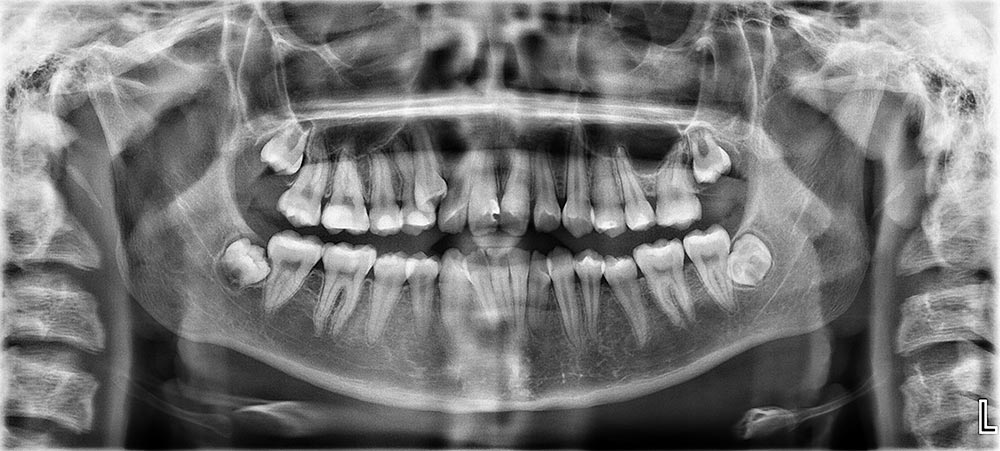Impacted teeth
Impacted teeth are teeth that do not show clinical signs of eruption, and the time for their eruption has long passed. Tooth impaction is usually the result of reduced space in the jaws, that is, the presence of an obstacle.
Which teeth are usually impacted?
In most patients, the upper and lower wisdom teeth are impacted, followed by the upper incisors and canines, as well as the lower premolars. This is usually the case in jaws where there is anxiety due to insufficient width of the jawbone on one side and too large teeth on the other. In such jaws, the teeth are densely and closely spaced.
Unerupted teeth grow in the most different positions: obliquely (at a certain angle), vertically, or completely horizontally. They can be directed towards the adjacent tooth (and affect its root and position in general) or turned outwards, towards the edge of the jaw.
Those teeth that have partially erupted to the surface are designated as semi-impacted.
The diagnosis is established by a clinical examination and an X-ray of the jaws (orthopan), and sometimes it is necessary to make a 3D image as well.
Orthodontic therapy of impacted teeth
Impacted teeth are in most cases surgically removed. However, sometimes the dentist, in cooperation with the orthodontist and the oral surgeon, can assess that in the long term, it is better to save a tooth if there are conditions for it.
With well-planned oral surgery and orthodontic therapy, an impacted tooth (usually a canine or an incisor) is first surgically released. Then, with a fixed orthodontic appliance with special wire attachments, it is pulled and directed in the desired direction. Previously, space was surgically created for its repositioning.
In this way, an effort is made to encourage the sprouting of impacted teeth, to preserve the total number of teeth, and to form a proper dental order in the jaw.

Indications for surgical tooth extraction
When the conditions for orthodontic treatment of an impacted tooth have not been met, the oral surgeon will suggest its extraction.
Surgical tooth extraction is a special type of extraction, which differs from simple and complicated tooth extraction performed by a dentist. This type of tooth extraction is indicated precisely in the case of impacted teeth, but also when there is curvature of the roots and other complicated conditions in the alveolar bone.
What does surgery for impacted teeth look like?
This intervention is performed by an oral surgeon in the operating room and with the application of local anesthesia. In patients whose psychophysical condition does not allow this type of anesthesia (excessive fear or special health conditions), sedation is applicable. Sedation is performed by a specialist in anesthesiology. Analgosedation is also used in long-term operations, associated with deep impactions and jaw cysts.
During the operation of impacted teeth and other complex conditions, the oral surgeon cuts the alveolar bone and uses special instruments to extract the impacted tooth. It actually means, extracting the remaining roots. The incision is then sutured, and the sutures are removed after 6–7 days.
Postoperative Course
After the intervention, the patient is advised to put cold compresses on the outside of the cheek, consume cold drinks, and avoid exposure to the sun, greater physical exertion, and smoking.
Postoperative recovery usually includes the use of analgesics for pain relief.
